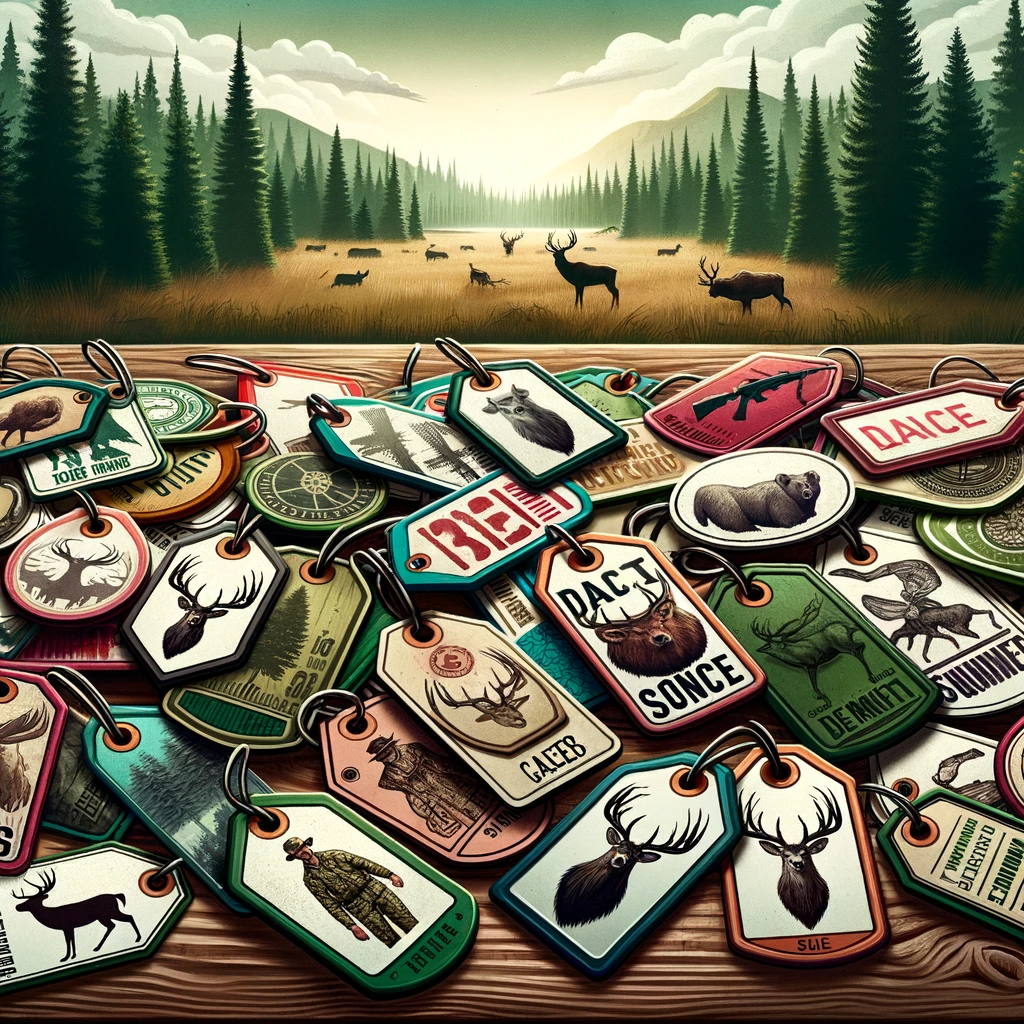The world of hunting is complex and multifaceted. At its core, it revolves around a delicate balance between human interaction and the environment. Hunting tags, often overlooked, are fundamental to maintaining this balance. They stand as a testament to the commitment of wildlife agencies in ensuring sustainable hunting.
Across the globe, these tags have become a cornerstone of wildlife management. By controlling and monitoring hunting activities, they play a pivotal role in conserving biodiversity. Their issuance ensures that hunting doesn’t jeopardize the ecological balance or the survival of specific species. Thus, they symbolize a harmonious blend of recreation and responsibility.
Why Hunting Tags are Necessary
In a world where human activities continually intersect with nature, hunting tags serve as a vital checkpoint. Without these checks in place, overhunting could quickly spiral out of control. This unchecked hunting could potentially decimate entire species and disrupt the ecological chain.
However, these tags go beyond mere population control. They aid in data collection, providing wildlife agencies with invaluable insights into animal movement, habits, and health. This data, in turn, informs conservation strategies, ensuring that they are effective and targeted.
Moreover, for hunters, these tags elevate the hunting experience. By ensuring that certain standards and regulations are met, they guarantee that hunting remains a challenge, a dance between man and nature rather than a one-sided onslaught.
Different Types of Hunting Tags
Diversity is a hallmark of nature, and hunting tags respect this principle. Not all tags are created equal, reflecting the varied landscapes and species they represent. Species-specific tags, for instance, are tailored for particular animals like deer, elk, or turkey. These tags provide hunters with clear guidelines on what they can and cannot hunt.
On the other hand, general tags offer a broader spectrum. These tags might cover a range of species within a specific region. They cater to those hunters who are not fixated on a particular species but are more drawn to the overall experience.
Furthermore, some tags cater to specific hunting methods. Bow hunting, for instance, may have separate tags from rifle hunting. This distinction ensures that each hunting method’s impact is considered and balanced within the broader ecosystem.
The Application Process: Tips and Tricks
Navigating the labyrinth of hunting tag applications can be daunting. Yet, with a strategic approach, hunters can increase their chances of success. One of the foremost tips is early application. Given the high demand, timely submission can be a game-changer.
Another valuable strategy is thorough research. Different regions might have different requirements or quotas. Being well-informed can mean the difference between a successful application and disappointment.
Engaging with the hunting community also offers a treasure trove of insights. Seasoned hunters often share their experiences, offering tips on lesser-known hunting spots or nuances in the application process. These peer-to-peer interactions can significantly streamline the application journey.
Embracing the Importance of Hunting Tags
In conclusion, hunting tags are far more than mere pieces of paper or bureaucratic instruments. They encapsulate a promise—a promise of sustainable hunting, of respect for nature, and of a future where hunting can be passed down to successive generations.
Recognizing their importance transcends individual interests. It speaks to a collective commitment to the planet. As hunters gear up for their next adventure, they must do so with an understanding of the bigger picture, where hunting tags are not just a means to an end but an emblem of conservation and coexistence.


Leave a Reply